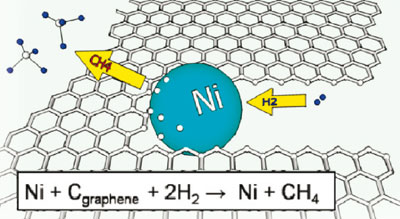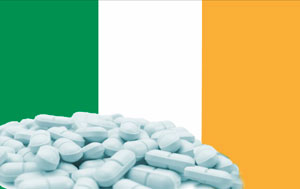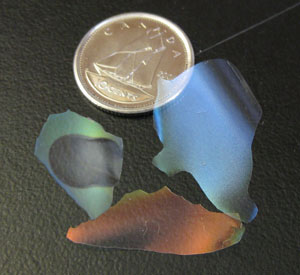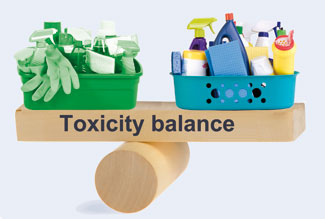Any increase in Ireland's corporation tax rate as part of a financial bailout could hurt the country's rapidly expanding pharmaceutical industry, currently its largest contributor to corporation tax.
Ireland is in talks with the European Union and the International Monetary Fund regarding a potential rescue package to stabilise the Irish banking system and protect the euro. So far Irish leaders have ruled out any increase in its corporation tax rate as part of the deal. But media reports have suggested that member states may try to force an increase to guarantee a return on their investment.. read more.
Field of Science
-
-
Earth Day: Pogo and our responsibility2 months ago in Doc Madhattan
-
What I Read 20243 months ago in Angry by Choice
-
I've moved to Substack. Come join me there.4 months ago in Genomics, Medicine, and Pseudoscience
-
-
The Site is Dead, Long Live the Site2 years ago in Catalogue of Organisms
-
The Site is Dead, Long Live the Site2 years ago in Variety of Life
-
-
-
-
Histological Evidence of Trauma in Dicynodont Tusks6 years ago in Chinleana
-
Why doesn't all the GTA get taken up?7 years ago in RRResearch
-
-
Harnessing innate immunity to cure HIV8 years ago in Rule of 6ix
-
What kind of woman would pray for health or use spiritual healing?9 years ago in Epiphenom
-
-
-
-
-
-
post doc job opportunity on ribosome biochemistry!10 years ago in Protein Evolution and Other Musings
-
-
Blogging Microbes- Communicating Microbiology to Netizens10 years ago in Memoirs of a Defective Brain
-
Re-Blog: June Was 6th Warmest Globally10 years ago in The View from a Microbiologist
-
-
-
The Lure of the Obscure? Guest Post by Frank Stahl13 years ago in Sex, Genes & Evolution
-
-
Lab Rat Moving House13 years ago in Life of a Lab Rat
-
Goodbye FoS, thanks for all the laughs13 years ago in Disease Prone
-
-
Slideshow of NASA's Stardust-NExT Mission Comet Tempel 1 Flyby14 years ago in The Large Picture Blog
-
in The Biology Files
Have you really reduced the world's carbon footprint?
I do not usually criticise TED talks but this time I am making an exception. In this talk John Hardy the founder of Green School spoke about how he founded and developed Green School. He said that he was living a happy life till he saw Al Gore's movie, An Inconvenient Truth. It woke him up and made him realise that the Earth is fragile and that we must learn to take better care of it and reduce our carbon footprint.
In an attempt to educate he built the Green School, a place built completely out of bamboo. Kids are not only taught the usual subjects but also taught how to live 'whole lives'. The students learn to the traditional things of the Bali locality, plant rice, cut bamboo and build structures. They have made the whole place so green that there is almost no man-made synthetic material in the building. They have even designed toilets such that you don't have to flush. To know more you can watch the video at the end of this post. It's all a very fascinating idea and quite well done.
At one point he mentions that his school has a 160 students from 25 countries and because he wants the locals to be involved. There are scholarships for Bali students and also 2o% seats reserved for them. It all sounded a bit odd to me. So out of curiosity I visited their website and realised that of course Bali students need scholarships to attend this school considering how expensive it is.
Non-refundable fees for all students $2750, then annual fees for Nusery and Pre-K $5000, for Kindergarten $8000, for Grades 1-5 $9000, for Grades 6-9 $10000. It makes me think that these students who come from 25 countries, must have really rich parents to be able to support such an education. Which also means that they are probably not residents of Bali but really settled in those 25 different countries.
Now if they come visit their kid once a year for the annual gathering and the kid travels back to his home country every summer then per kid there are 6 plane travels per year (2 parents and 1 kid). Assuming 80% students (128) are from abroad it would mean 768 plane travels per year for the whole school. Assuming a mean distance of 9000 miles for each ride, it would mean a carbon footprint of 1,228,800 kg of carbon dioxide. Assuming a mean distance of 4500 miles would still mean a carbon footprint of 614,400 kg of carbon dioxide
Now how much did they reduce the world's carbon footprint by using bamboo to make that school again?
Porous silica makes funky coloured films and could lead to warmer windows
Using nanocrystalline cellulose (NCC) from wood pulp, Canadian researchers have for the first time prepared mesoporous chiral nematic structured silica materials that may have potential as tuneable reflective filters in smart windows, chiral catalysts in synthesis and even as optical sensing devices.. read more.
Chemistry that can change the world – II
 |
| Ni nanoparticles absorb carbon from graphene edges which then reacts with H2 to create methane |
How 'green' is your detergent?
Fragranced household products, even those labelled as 'green', can emit large numbers of hazardous chemicals that aren't listed on their labels, US researchers have confirmed. The research raises questions about the risks associated with these products and regulating the claims on their labels.
A team led by Anne Steinemann at the University of Washington in Seattle, US, used gas chromatography to analyse the volatile organic compounds (VOCs) released from 25 of the top-selling US products such as detergents, hand sanitisers and air fresheners, and found that they emit many hazardous compounds... read more.
A team led by Anne Steinemann at the University of Washington in Seattle, US, used gas chromatography to analyse the volatile organic compounds (VOCs) released from 25 of the top-selling US products such as detergents, hand sanitisers and air fresheners, and found that they emit many hazardous compounds... read more.
I know why the Daily Mail's news sticks in our heads
If you are a reader of newspapers in the UK and are interested in reading science news then you will also know the Daily Mail (or the Daily Hate, as some people like to call it). The reason why it is famous is not because it does really great science news, but because it does exactly the opposite. To give you a taste of what some people think of it, here is a review:
Researchers from Princeton University found that 'ideas published in hard-to-read fonts are difficult to learn but easier to remember'. Futurity reports:
PS: I am not the first person to think that they use difficult fonts, see this.
The Daily Mail is an awful, awful paper. Will happily skew the facts to make Britain out to be a country swimming with knife-wielding immigrants, benefit cheats and general disorder, turning readers into frightened reactionaries. Regularly get pulled up by media watchdogs because of journalism that is anecdotal, twisted or just plain made up. I find it dictatorial in its opinions at others, I believe there's no newspaper which has a more dangerous effect on British society.But my point is not to defame the Daily Mail, there are many who do it and it still enjoys a really large readership. I want to tell you about a piece of research that I read about which might explain why the Daily Mail's headlines (or even the content) stick in your head. The short answer is hard-to-read fonts.
Researchers from Princeton University found that 'ideas published in hard-to-read fonts are difficult to learn but easier to remember'. Futurity reports:
Apart from all the fear mongering tactics that the Daily Mail uses, these fonts might be one big reason why people tend to remember what the Mail said more that what the Times said!In the first, 28 participants between the ages of 18 and 40 were brought to a lab at Princeton and asked to learn about extraterrestrials, to limit the amount of already known information that could influence the test.The material was presented in either easy or challenging fonts. The subjects were given 90 seconds to memorize information about the aliens, distracted for 15 minutes and then tested.Those who read about the aliens in an easy-to-read font (16-point Arial pure black) answered correctly 72.8 percent of the time, compared to 86.5 percent of those who reviewed the material in hard-to-read fonts (12-point Comic Sans MS or Bondoni MT in a lighter shade).
PS: I am not the first person to think that they use difficult fonts, see this.
Subscribe to:
Posts (Atom)





















